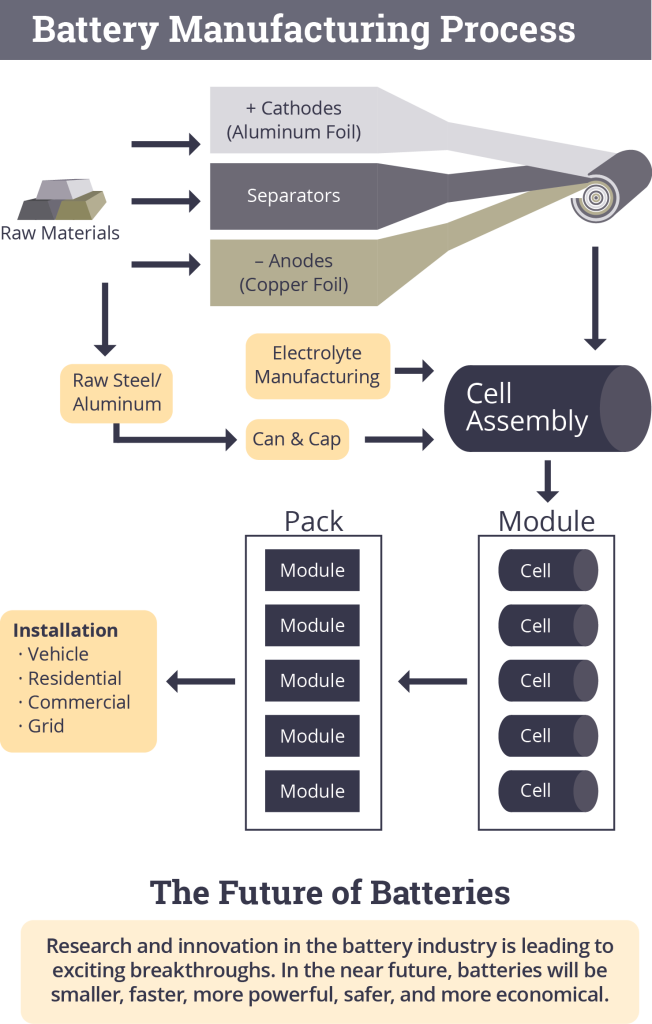Electric Vehicle Battery Technology
Today, there are many different types of batteries, but lithium-ion batteries are the most popular battery on the market today due to their reliability, high energy density, and low maintenance.
Batteries are composed of three major components – the cathode, the anode and the electrolyte – that store electrical energy in the form of chemical energy and can convert chemical energy back into electricity.
Batteries used in electric vehicles help to reduce the U.S.’s dependence on foreign petroleum sources and stabilize transportation costs by shifting the nation from oil to electricity. Automakers continue to develop cost-effective electric cars with faster charging times and longer ranges, and many equipment manufacturers, utilities, and government agencies are establishing a rapidly expanding network of charging infrastructure.
Rising Global Demand
The global battery market is experiencing meteoric growth. Technology advancements and innovations have made batteries more efficient and cost-effective. Research breakthroughs are creating incredible leaps in energy density and vehicle range. Innovation, increased consumer understanding, and cost reductions are driving significant growth in market demand for batteries. By 2024, the worldwide market for lithium-ion batteries in electric vehicles is projected to grow from $7.8 billion to $30.6 billion per year.
Falling Costs of Electric Vehicle Batteries
A recent study found that industry-wide battery costs fell from more than $1,000 per kilowatt-hour in 2007 to around $410 in 2014, a reduction of 14 percent per year. Costs for market-leading firms like Nissan and Tesla fell to $300 per kilowatt-hour in 2015, signaling that costs may already have reached the battery price needed for cost parity with conventional cars.
Careers Available in the Electric Vehicle Battery Industry
Manufacturers of batteries for electric vehicles will look to hire electrical engineers, industrial engineers, chemists, logistics analysts, quality technicians, and equipment maintenance technicians, among others.
